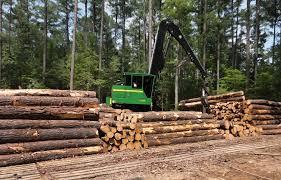-
Fil d’actualités
- EXPLORER
-
Pages
-
Groupes
-
Evènements
-
Blogs
The Role of Sustainable Woodland Management in Environmental Conservation

The implementation of sustainable woodland management has gained importance as a necessary strategy to maintain the vitality and functionality of woodland ecosystems. These practices are designed to balance ecological health with human needs, ensuring that woodlands provide essential benefits both now and in the future.
Woodlands serve many critical roles including carbon sequestration, habitat provision for wildlife, soil stabilization, and support for recreational activities. Proper management methods help mitigate the effects of deforestation, climate change, and overuse, contributing to the resilience of these natural areas.
Core Elements of Sustainable Woodland Management
1. Selective Harvesting and Maintaining Forest Structure
-
Removing specific trees rather than clear-cutting helps maintain canopy cover and preserves habitats.
-
Careful planning minimizes damage to remaining trees and soil, aiding natural regeneration.
2. Replanting and Natural Regeneration
-
Planting native species after harvest supports biodiversity and ecosystem balance.
-
Encouraging natural regeneration promotes genetic diversity and forest adaptability.
3. Protecting Wildlife and Biodiversity
-
Retaining deadwood and old trees provides critical habitat for various species.
-
Establishing protected zones within woodlands safeguards sensitive flora and fauna.
4. Soil and Water Resource Conservation
-
Maintaining vegetation buffers along streams helps reduce erosion and protect water quality.
-
Avoiding heavy machinery during wet conditions prevents soil compaction and degradation.
5. Monitoring and Adaptive Strategies
-
Regularly assessing woodland health guides necessary adjustments to management plans.
-
Adapting to environmental changes such as pests or droughts ensures ongoing sustainability.
Benefits of Applying Sustainable Woodland Management
-
Preserves the ecological integrity of woodlands for future generations.
-
Supports carbon storage efforts, contributing to climate change mitigation.
-
Maintains diverse habitats that sustain various plant and animal species.
-
Protects soil health and water quality, benefiting broader ecosystems.
-
Provides renewable resources in a responsible and balanced manner.
Conclusion:
Ensuring that woodland areas continue to provide ecological, economic, and recreational benefits requires integrating thoughtful management with conservation priorities. By emphasizing protection of biodiversity, soil and water conservation, and the ability to adapt to changing conditions, land stewards embody the principles at the heart of sustainable woodland management, which helps secure the future health of these vital ecosystems.
- Art
- Causes
- Crafts
- Dance
- Drinks
- Film
- Fitness
- Food
- Jeux
- Gardening
- Health
- Domicile
- Literature
- Music
- Networking
- Autre
- Party
- Religion
- Shopping
- Sports
- Theater
- Wellness


